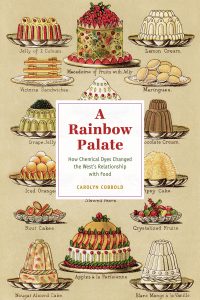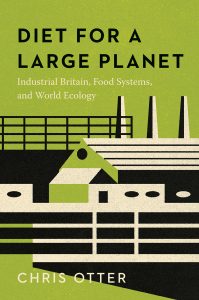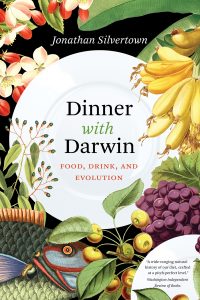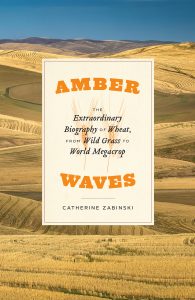How What We Eat Has Shaped Our World
As we enter the holiday season, many of us are beginning to plan festive meals to share with our family and friends (virtual turkey-carving, anyone?). Visions of roasted meats, fresh breads, heirloom vegetables, herbs, spices, and sweet sweet pies abound. But what shaped our modern diets? Why do we eat what we eat, and what does the cultivation of our menus look like? We checked in with the authors of a range of foodie tomes to hear their response to a central question: how has food production and consumption shaped our modern world?
Carolyn Cobbold, author of A Rainbow Palate: How Chemical Dyes Changed the West’s Relationship with Food
“Man-made chemical additives and industrialization have democratized food consumption by bringing cheaper products with a longer shelf life to more people. At the same time, our trust in food, producers, and science has diminished. We fret about not knowing the provenance of our food while forgetting that billions of people can now eat like kings in cities devoid of farms. We worry about the long-term impact of consuming food filled with synthetic chemicals, but we forget that modern preservatives help to kill the bacteria that rots food and makes us ill. We cry out for more natural and healthy food. But what is natural and what is healthy? As a result, modern consumers have an increasingly love/hate relationship with the food on their plates. Their burgers, fried fish, and avocados consumed with fear and guilt.”
Christopher Otter, author of Diet for a Large Planet: Industrial Britain, Food Systems, and World Ecology
“My book, Diet for a Large Planet: Industrial Britain, Food Systems, and World Ecology, argues that there are few aspects of today’s world that have not been transformed by shifting dietary patterns over the past two or three centuries. Eating a diet rich in red meat, sugar, and refined grains transformed human and animal bodies and large swathes of the earth’s surface. We cannot understand today’s compound threat of climate change, global inequality and metabolic disorders without comprehending the history of long-term dietary transition.”
Jonathan Silvertown, author of Dinner with Darwin: Food, Drink, and Evolution
“As an evolutionary biologist and ecologist, I look to the Neolithic and the development of agriculture that took place at that time to answer this question and can only reply rhetorically with ‘How hasn’t food production and consumption shaped the modern world?’ The Neolithic was the midwife of the Anthropocene. Yup, my students look puzzled when I tell them this, too, so let me explain. The Neolithic marks a transition from subsistence based on hunting and gathering to an increasing dependence on cultivated crops and domesticated animals. This happened first in Southwest Asia in the region known as the Fertile Crescent where a large number of familiar plants and animals were domesticated: wheat, barley, peas, lentils, sheep, pigs, cattle, and more. Less well known is that there were at least twenty more places around the globe where, independently, other species that we all eat today were domesticated. Potatoes and other root crops in the Andes, maize and tomato in Mexico, rice at least a couple of times in East Asia, chickens in the same area, even sugar cane in New Guinea. Pretty much everything raised or grown on farms today was first domesticated within a window of time between 12,000 and 7,000 years ago. The details of the process as well as the species varied from place to place, but the consequences were remarkably similar everywhere: sustained population increase, the foundation of cities and long-distance transmission of new foods. That was the end of the Neolithic. The Anthropocene is the epoch in which humans became a defining geological force on planet Earth. Our impact can be measured as our numbers multiplied by our consumption of resources. Food production and consumption are thus fundamental to our impact, and that is the sense in which the Neolithic was the midwife of the Anthropocene. More food, more people; more people, more impact.”
Luke Keogh, author of The Wardian Case: How a Simple Box Moved Plants and Changed the World
“Plants often travel a great distance to our tables from where they were first discovered. Coffee, tea, oranges, lemons, soybean, and many others have long histories and have their roots on distant shores. We often forget that many of the plants on our breakfast table come from Asia or Africa. So many of these foods have their stories deeply wedded to major turning points in modern history, such as imperialism and the plantation economy, but they still remain delicious every morning when we wake up!”
Catherine Zabinski, author of Amber Waves: The Extraordinary Biography of Wheat, from Wild Grass to World Megacrop
“From an ecological perspective, our capacity to turn over forest and prairie soils and plant seeds for food or forage enabled us to support an ever-increasing human population. At the same time, we eliminated habitat for many different species, or at best, compressed their geographic ranges. The challenge for us, with our understanding of all of the benefits we derive from intact ecological systems, is to combine principles of ecology with techniques of agriculture so we can grow our food in an ecologically sustainable manner.”
Andrew Deener, author of The Problem with Feeding Cities: The Social Transformation of Infrastructure, Abundance, and Inequality in America
In the early 1900s, companies like the Great Atlantic & Pacific Tea Company, Acme Tea Company, and the American Stores Company opened up hundreds of small grocery stores in city neighborhoods and on suburban Main Streets. As the suburbs sprawled, federal and state governments financed the construction of new roads and highways. The auto and trucking industries replaced rail transportation. Grocery companies and food manufacturers experimented with reshaping supply chains, eventually changing how we consume and value food in the United States. The food system grew into a vehicle of organizational and market innovation: automated production lines, more packaged and processed food products with longer shelf lives, the spread of supermarkets and big box stores as one stop shopping, and the invention of a bar code information network to track thousands of different products and millions of individual items through production, distribution, and consumption. This political and economic infrastructure entangled government subsidies, farms, factories, wholesalers, retailers, shippers, and logistics firms. Our very own consumer ways were the product of a system built to solve profit-making efficiency problems instead of nutritional, food security, and public health problems.
Don’t go hungry! All of these books are available from our website or your favorite bookseller.





